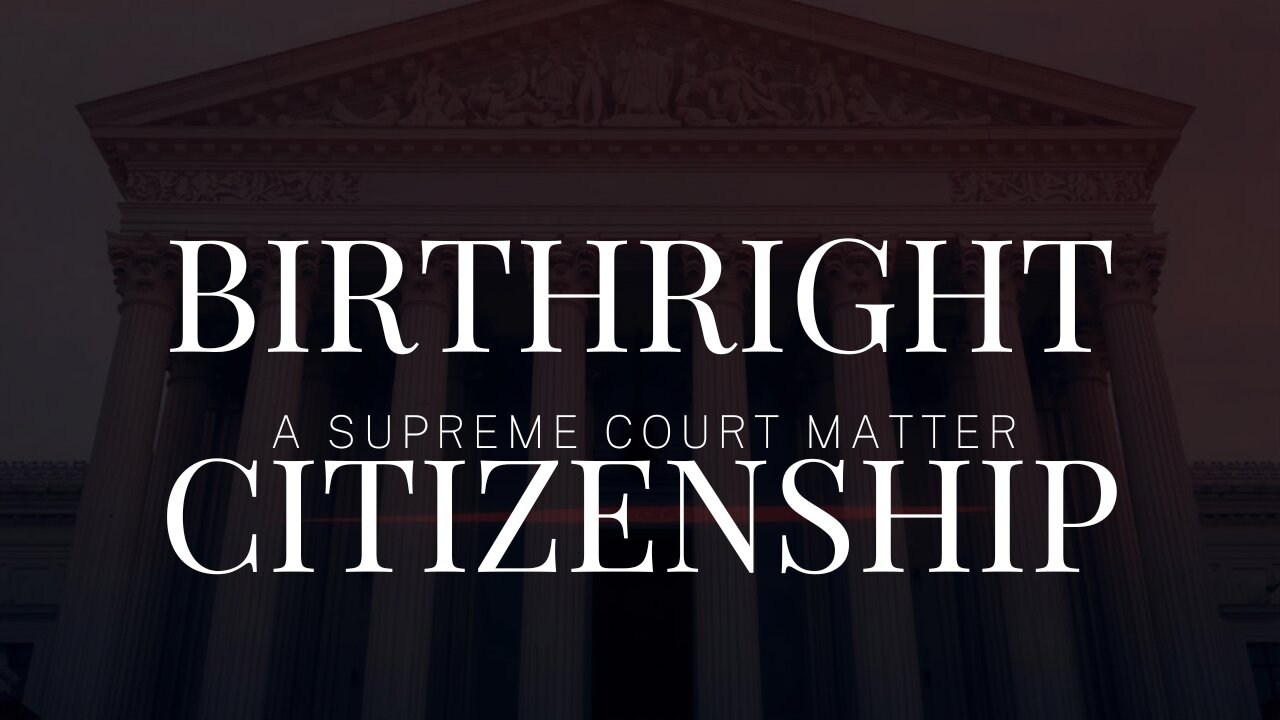A quiet battle for the soul of American medicine has been taking place as if in a darkened operating theater. The American Association of Physicians and Surgeons (AAPS) has stood against America’s medical gatekeepers for more than eight decades. These gatekeepers are not State Boards of Medical Examiners. They are not even those bodies that make the licensing exams all doctors take to get medical licenses. The gatekeepers in view here are Specialty Boards, who certify doctors as competent in any given medical discipline. AAPS caught the three biggest Specialty Boards enforcing the government’s dictates on coronavirus and its vaccines. These Boards decertified some doctors and threatened others with similar sanction if they dared oppose the party line. So AAPS sued – and now a federal appellate court has certified that they indeed have standing. The medical monopoly is now under challenge.
Who are the American Association of Physicians and Surgeons?
The American Association of Physicians and Surgeons (AAPS) began in 1943. Their mission statement holds:
AAPS has been dedicated to the highest ethical standards of the Oath of Hippocrates and to preserving the sanctity of the patient-physician relationship and the practice of private medicine.
In short, AAPS is the conservative – and freedom-loving – alternative to the American Medical Association (AMA). Their motto is omnia pro aegroto – all for the patient. They do not maintain a history section. But, given the legal controversies they have started, one can safely assume that its charter members took alarm, during World War II, at the government starting to micro-manage medicine. To them, all medicine should be a private affair.
The clearest statement of their position and worldview is their Medical Practice Code and By-laws page. According to it, AAPS stands resolutely against “cookie cutter” or “one size fits all” medicine. They similarly stand against either socialized medicine (government control) or corporate medicine. Most of all they stand for complete freedom of patient and doctor to negotiate a course of treatment according to their respective understanding of whatever condition the patient is in.
The only weakness in the AAPS Code of Medical Practice is the allowance it gives regarding the “control” of “contagious” or “communicable” disease. Even so, AAPS agrees to measures protecting the interests of those “who take reasonable precautions of self-protection against:
“Manifest danger from communicable disease, or
“Intolerable social maladjustment.”
Jane M. Orient, M.D., has been the chief “media contact” for AAPS for several decades.
The medical gatekeepers and the COVID rules
On July 12, 2022, AAPS’ Educational Foundation filed suit against three Specialty Boards and against Homeland Security Secretary Alejandro Mayorkas. Specifically they sued the American Boards of Internal Medicine, Obstetrics and Gynecology, and Family Medicine, as well as Secretary Mayorkas. In their complaint, they alleged:
Abridgment of freedom of speech (all defendants),
Violation of the Administrative Procedures Act (Secretary Mayorkas),
Tortious Interference with Business Relations (the Specialty Boards),
Perpetuation of a monopoly, in violation of Section 2 of the Sherman Antitrust Act.
AAPS’ allegation against Secretary Mayorkas concerns the Disinformation Governance Board (DGB), an attempt at a Ministry of Truth. (This Board came under “review” before DHS finally shut it down – for now. Nina Jankowicz, its head, is one of five hundred Americans whom Vladimir Putin has forbidden to enter Russia. Documents about the DGB are still a State secret.
AAPS alleged that the DGB, by its very existence, violated the:
Administrative Procedure Act, and the:
Federal Advisory Commission Act.
Not only that, but Congress never authorized such a Board in any legislation. Once again: the President does not create agencies. Only Congress does.
Why are Specialty Boards so powerful?
The AAPS’ allegations against the Specialty Boards have everything to do with their function, their authority – and their recent abuse of that authority. Everyone who practices medicine, must have certification by the Board of his or her chosen specialty. No hospital will ever grant admitting privileges to other than a “Board certified” doctor, nor hire him, nor permit him to perform the duties of an emergency-room director or practitioner, laboratory director, or other such ancillary practitioner. This is not a matter of direct law, but it is a matter of mutual agreement with the hospitals.
Furthermore, every physician must be a member in good standing of a College of physicians in that specialty. Every Board has an associated College – hence, American Colleges of Physicians, Obstetricians and Gynecologists, etc.
Another party to this agreement is the Joint Commission on Accreditation of Health Organizations. “Board certification” of every member of “Medical Staff” is a JCAHO requirement.
So when a Board tells a physician that it will decertify him, or refuse certification, if he publicly questions the opinions of that Board or its associated College, doctors listen. They listen even harder if the Board carries out such a threat. Which all three Boards have done. From the complaint:
2. ABIM, ABOG and ABFM (the “Board Defendants”) have certification monopolies in their respective specialties, which are based primarily on written multiple-choice medical examinations. Though ostensibly nonprofit and non-partisan, they are outspokenly allied with the Biden Administration on fundamental issues of abortion, surgical and pharmacological transgender interventions, lockdowns, mask and vaccine mandates. For example, on June 24, 2022, Defendant ABIM issued a statement that the Supreme Court decision in Dobbs v. Jackson Women’s Health Organization “will cause health care to deteriorate in the US for many years to come.”1 ABIM joined a statement by the AMA that “condemns” this Supreme Court decision as “egregious”,2 similar to the position against the Court decision taken on that same day by the Biden Administration. ABIM also displayed its agreement with the subsequent Biden Administration in ABIM’s criticism of President Trump’s proposed rules in 2020 to protect the right of conscience of physicians to decline to provide “transgender” interventions.3
3. The Board Defendants have announced their campaign to take action against certifications earned by physicians who make public statements with which the Board Defendants disagree. Defendants ABIM and ABFM have already sent letters to physicians threatening them with revocation of their earned board certifications based on the exercise by those physicians of their First Amendment rights on matters of public policy. Defendant ABOG has publicly warned physicians against making statements against abortion and contraception, lest they have their earned board certifications revoked by ABOG if it disagrees with such statements.
4. This partisan retaliation by the Board Defendants has been based in part on statements by physicians warning pregnant woman against receiving the Covid vaccine, even though the World Health Organization issued a similar warning in 2021. Retaliation has occurred by the Board Defendants against physicians who were praised by Robert F. Kennedy, Jr., in his bestselling book, The Real Anthony Fauci. In some cases, the retaliation is based expressly on criticism by physicians of Dr. Fauci, who as a government official may be freely criticized.
Andrew L. Schlafly, son of Phyllis Schlafly and founder of Conservapedia, pleaded the case for AAPS.
Initial disposition of the medical gatekeepers’ case
The case came before Judge Jeffrey V. Brown of the U.S. District Court for the Southern District of Texas (Galveston Division). Jeff Brown had served on the Texas Supreme Court before President Donald J. Trump appointed him to the Federal bench in 2019. Back then, Roe v. Wade was still the “law of the land,” but Judge Brown had shared to Twitter (now X) links to the dissents in that case.
So AAPS must have expected Brown to sympathize with any physicians who lost (or nearly lost) their Board certifications over their support for Dobbs v. Jackson Women’s Health Organization. He wasn’t. He threw the entire case out in stages, first against the Specialty Boards (May 16, 2023), then against Secretary Mayorkas (May 23, 2023). Both times he said the AAPS lacked standing to sue the Specialty Boards or the Secretary. Regarding Mayorkas, Judge Brown said Mayorkas had “permanently” dissolved the DGB, so the case was moot. The judge found that the “Voluntary Cessation Exception” did not apply because no one credibly alleged that Mayorkas would reinstate the DGB.
Appeal
AAPS appealed the final judgment on July 19, 2023. In his brief to the Court of Appeals for the Fifth Judicial Circuit, Lawyer Schlafly argued that:
AAPS asserts a “right to hear” from certain physicians – physicians now afraid to speak by reason of Specialty Board action,
Antitrust injury is not limited to consumers and business competitors; such injuries harm the rest of us,
Secretary Mayorkas dispersed “Ministry of Truth” activities among several other agencies, and
The District Court never properly resolved AAPS’ claim under the Federal Advisory Commission Act.
The case came to oral argument on April 4, 2024. Then on June 3, 2024, the Fifth Circuit handed down its ruling. They found that:
AAPS does have standing. They have established all three elements of standing: injury, traceability, and redressability.
The District Court never reached the question of whether the Specialty Board are State actors. So the Fifth Circuit will not be the first court to do so.
Galveston District Local Rule 6, which seems to preclude amendment of complaint, is invalid. So the Antitrust claims are also still alive. Finally:
The District Court dismissed the case against Secretary Mayorkas on mootness grounds, with prejudice. Typical cases like this are dismissed without prejudice, thus giving the plaintiffs time to amend their complaints. So the Fifth Circuit changes “with prejudice” to “without.”
When the medical gatekeepers exposed themselves
This case came to court because the three most powerful medical Specialty Boards in America saw fit to stake out a leftist party line on abortion, and on appropriate treatment of coronavirus disease (COVID). Medical gatekeeping of the kind all Specialty Boards practice has always been illegal under the Sherman Act. But until a few years ago, no one had any issue with the Boards. That’s because no one caught the Boards being explicitly political in their decisions to grant or refuse certification. As Lawyer Schlafly said in his briefs, these Boards usually grant certification on the basis of written exams. Oral interviews are possible but are not the rule in all specialties. (Most Boards simply would not have time to schedule oral interviews of all candidates. Instead, a physician completing postgraduate training “takes Boards” toward the end of his last year.)
But now we see these Boards explicitly saying doctors ought to support abortion and contraception, as well as coronavirus vaccines. Worse, any doctor who dares question this, could lose certification – or the Board might not let them take the exam!
In times past, the medical gatekeepers were politically neutral, and set only a scientifically defensible standard for passing the gate. By telling doctors they must support abortion, they directly violated the Hippocratic Oath – at least in its original textual form. And by telling them to withhold warnings against coronavirus vaccines, they violated even the present watered-down version of that Oath.
Likelihood of success
Ten days after the Fifth Circuit ruled on this case, the Supreme Court smacked down the Fifth Circuit in FDA v. Alliance for Hippocratic Medicine – the Mifepristone Case. Justice Brett Kavanaugh, writing for a unanimous Court, found that the Alliance named above, lacked standing. Nearly two weeks later, the Court smacked the Fifth Circuit down again – in Murthy v. Missouri. Standing – again – blew up that case. In fact, the Moderates specifically said they would not countenance a case having a basis in “right to hear.”
This case will definitely work its way back to the Fifth Circuit, after further proceedings in Judge Brown’s court. It might even go directly to the Supreme Court immediately, even though the Court is now in recess. The medical gatekeepers face the first direct challenge to their gatekeeping authority since the very founding of these Boards. Secretary Mayorkas might be out of luck – because an election will surely intervene before the Court can “conference” the case. But while Secretary Mayorkas faces termination, the Specialty Boards, as currently constituted, do not.
Nevertheless, Andrew L. Schlafly acted brilliantly in suing the Specialty Boards and the government. The plaintiffs in Murthy v. Missouri sued the government alone. Had they sued the social platforms, they could have alleged the same antitrust violations that AAPS alleges against those Boards.
This brings yet more attention to the function of gatekeepers in maintaining the power of the establishment. Will the federal courts break their gatekeeping power? Only time will tell.
Link to:
The article:
https://cnav.news/2024/07/08/news/medical-gatekeepers-sued-gatekeeping/
Video:

AAPS v. ABIM, ABOG, ABFM, and SecHomeSec Mayorkas:
District Court docket page:
Complaint:
Fifth Circuit docket page:
https://www.courtlistener.com/docket/68390753/aaps-v-abim/
Appellants’ Brief:
https://storage.courtlistener.com/recap/gov.uscourts.ca5.214840/gov.uscourts.ca5.214840.23.0.pdf
Published opinion:
https://storage.courtlistener.com/recap/gov.uscourts.ca5.214840/gov.uscourts.ca5.214840.79.1.pdf
Declarations of Truth X feed:
Declarations of Truth Locals Community:
https://declarationsoftruth.locals.com/
Conservative News and Views:
Clixnet Media
References (from argument)
1 https://blog.abim.org/abim-supports-reproductive-health-and-access-to-care/ (viewed July 12, 2022)
2 https://www.ama-assn.org/press-center/press-releases/ruling-egregious-allowance-government-intrusion-medicine (viewed June 26, 2022).
3 https://blog.abim.org/reaffirming-community-values-transgender-rights-in-health-care-matter/ (viewed June 28, 2022).























